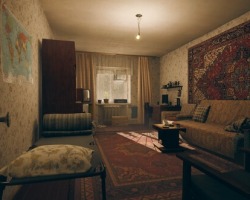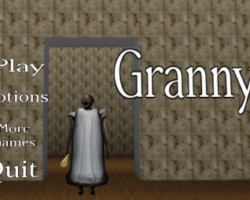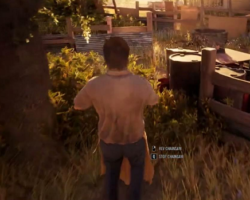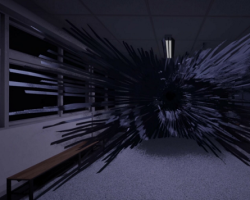Advertisement
Pieces of Me

Pieces Of Me begins with a visit that never reaches its purpose. Grisha returns to his hometown with the intention of seeing his younger sister. Instead, he finds a city that barely acknowledges his arrival. The buildings still stand, but something feels absent. Familiar locations offer no contact. The school, once active, now carries only the sounds of the player’s footsteps. The apartment, once a home, now feels paused in time. The player is not told what happened — the absence is louder than any message.
Shifts Within What Stays Still
The game unfolds through quiet exploration. It uses a first-person format to guide players through spaces that should feel known but become less certain with every room. The school’s graffiti-covered walls, the darkened hallways, and the chained doors all function as barriers that hold more than just physical weight. What was once daily routine now resists comfort. Clues are found in fragments — paper, light, silence. There is no rush, only a path that reveals itself piece by piece.
What Defines the Structure of Pieces Of Me
- Psychological walking simulator with narrative focus
- 90-minute playtime designed around personal pacing
- Themes of abandonment, memory, and emotional distance
- No combat or dialogue — only world interaction
- A spin-off of the game September 7th
- Realistic environments based on early 2000s post-Soviet aesthetic
- Sound design used for immersion and progression cues
- Exploration-driven changes in environment
- References to trauma, addiction, and family bonds
- Visual narrative told through spaces instead of characters
The Place Reacts, But Never Speaks
Pieces Of Me does not give instructions. Instead, it waits. Certain actions will open doors. Others will change what was previously seen. But none of it is announced. The player must notice patterns, listen to what’s not being said, and trust slow movement. The game relies on memory — both Grisha’s and the player’s. Returning to a hallway may bring a different sound. Re-reading a note may reveal something missed the first time. The game is not a mystery to be solved but a space to be understood.
Finishing With Fragments, Not Answers
The game ends with motion, not explanation. Some questions are raised but never resolved. The experience isn’t meant to close the story, but to reflect on what was held and what was lost. Pieces Of Me offers no single truth. Its strength lies in allowing the player to complete a journey without declaring it finished. The answers stay scattered — just like the title suggests — and what’s gathered depends on how the player looks, pauses, and walks through what remains.
Advertisement






















































































Comments